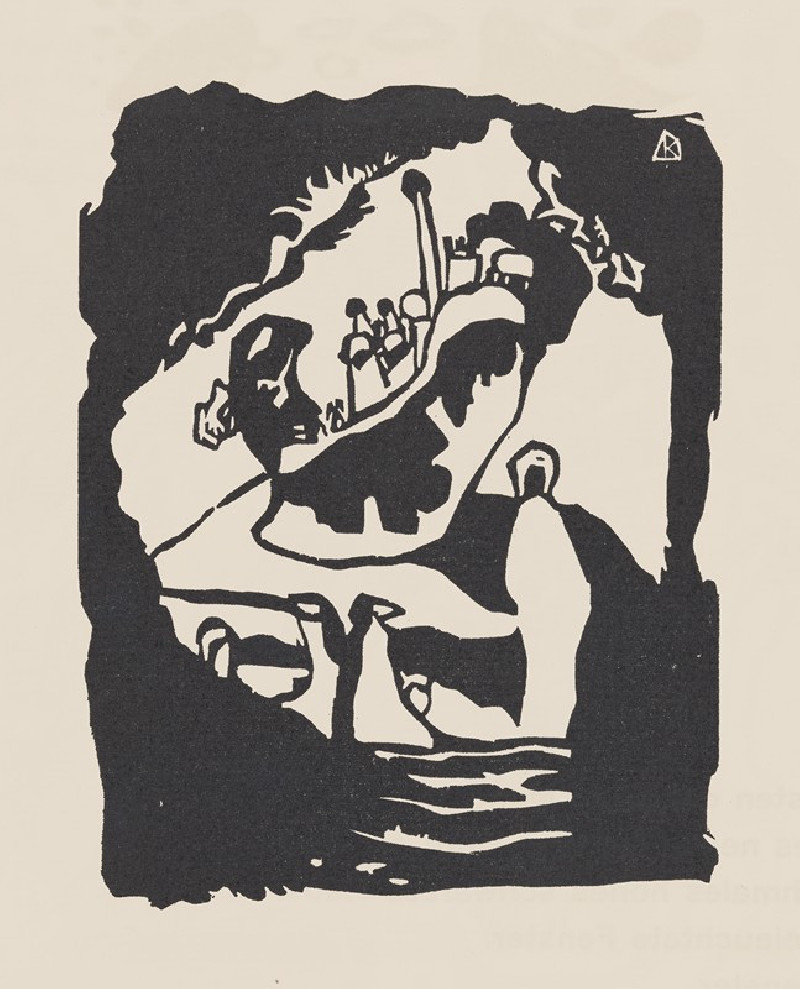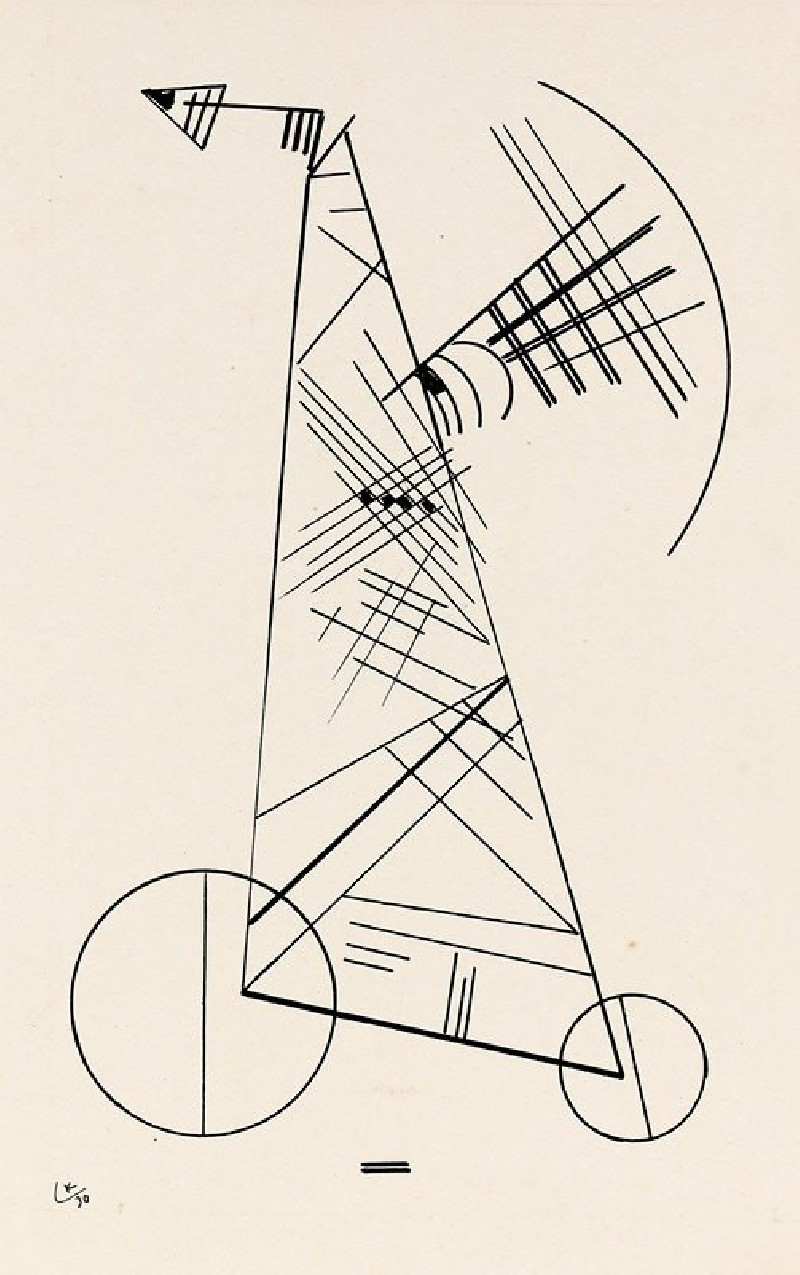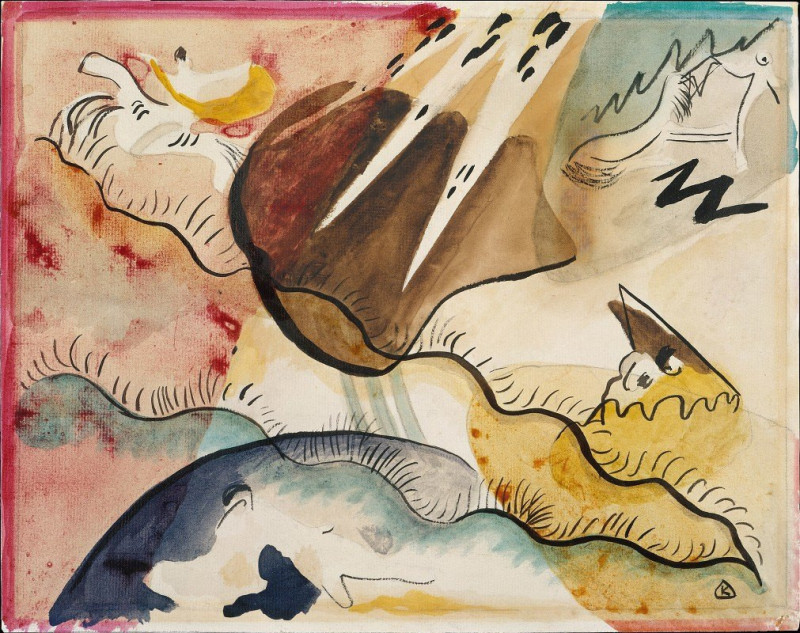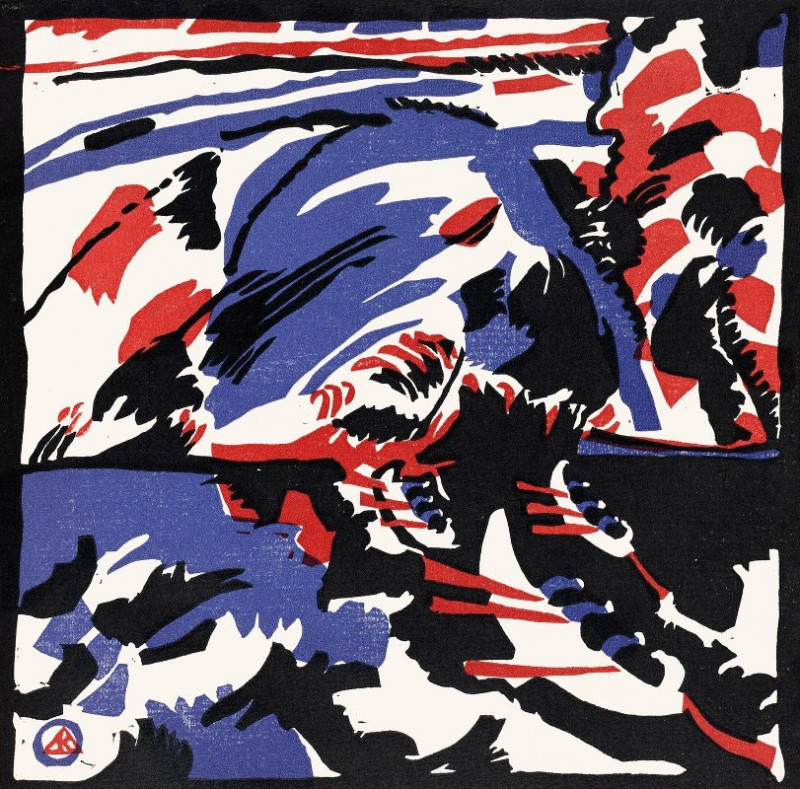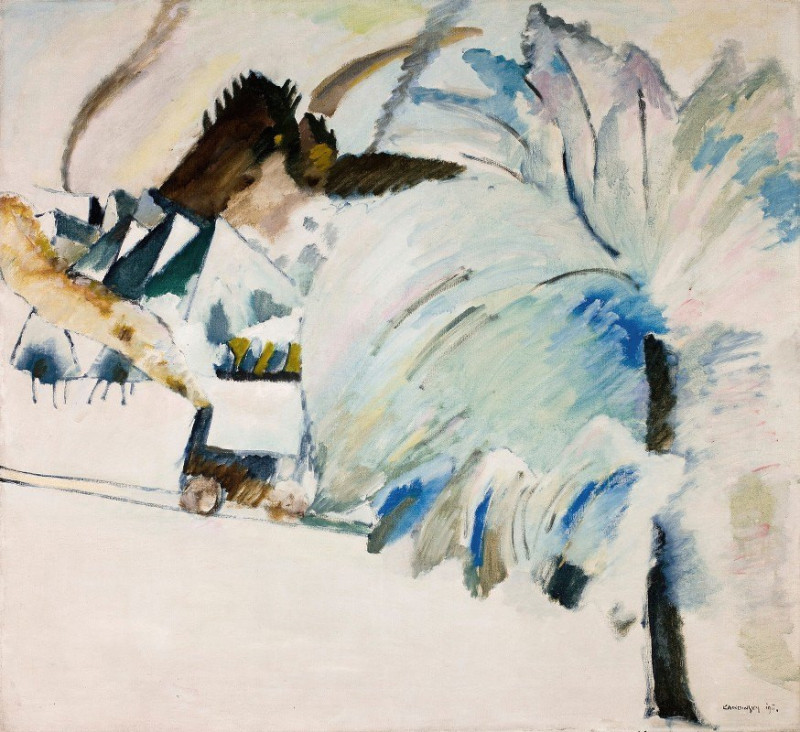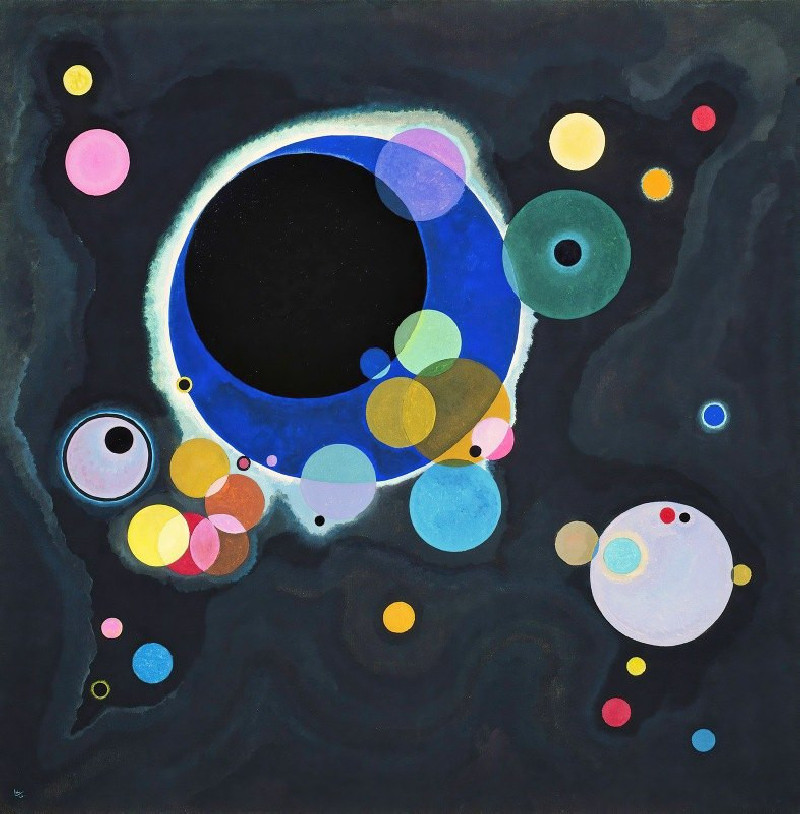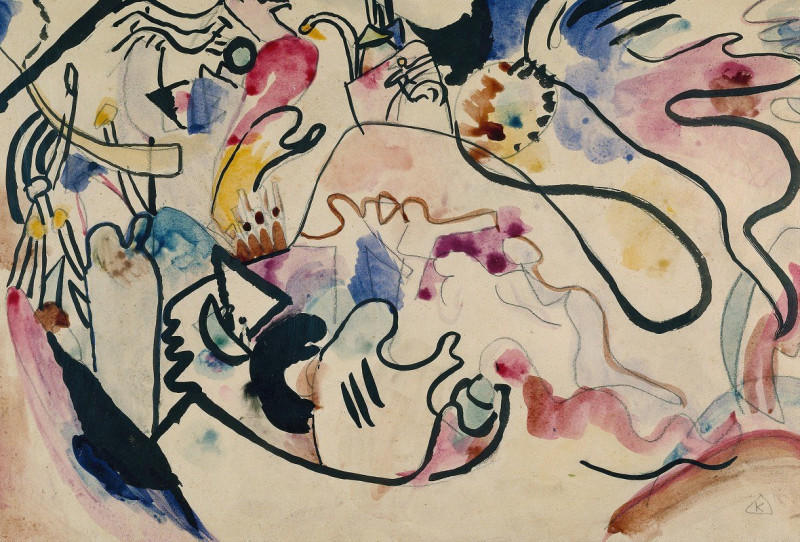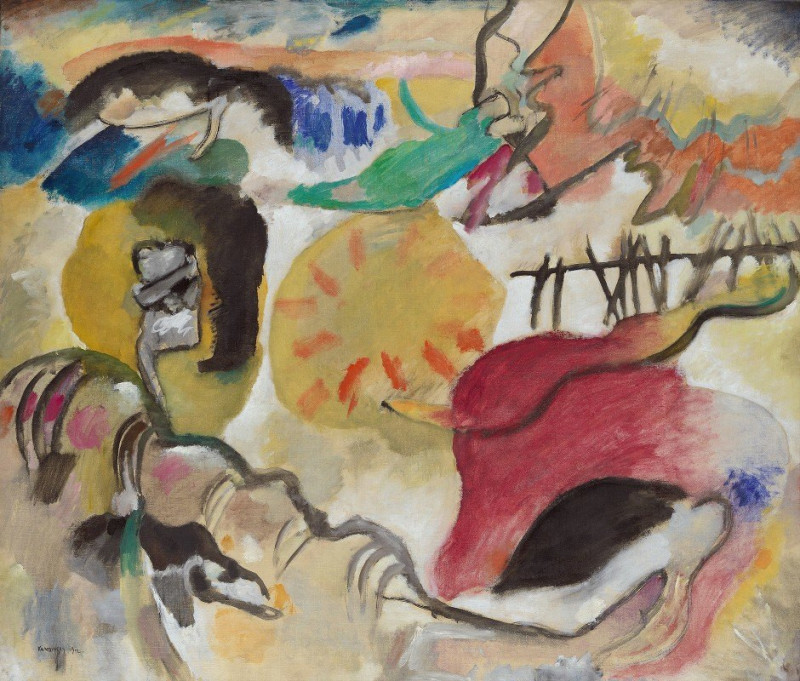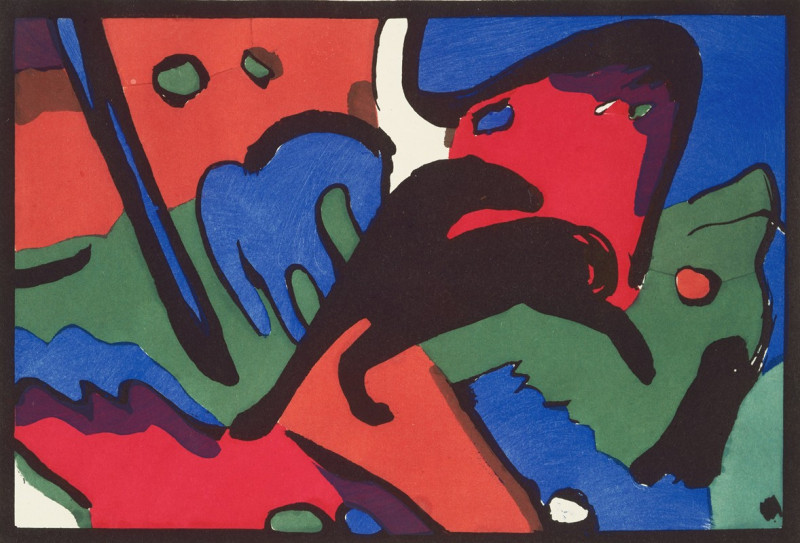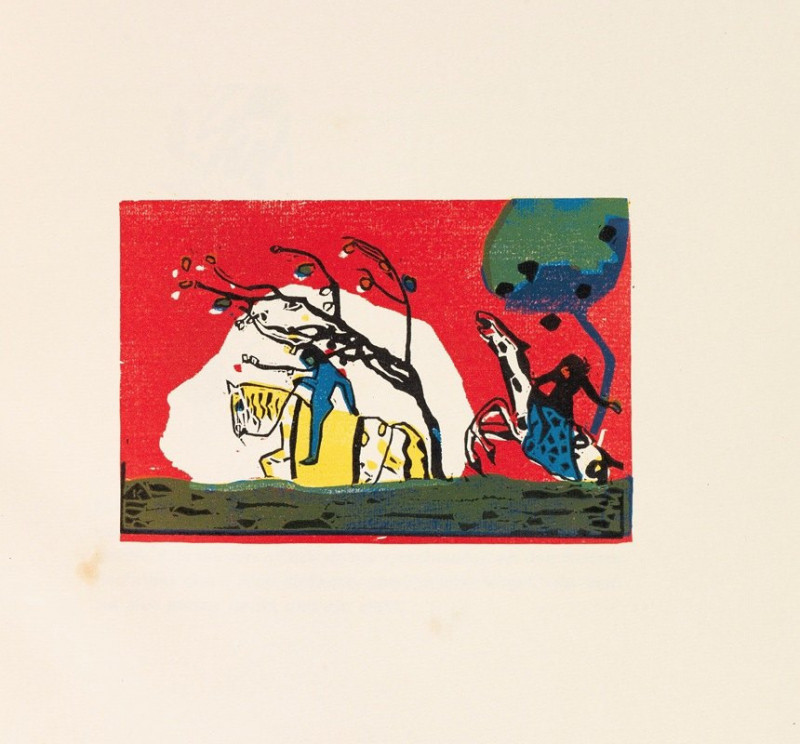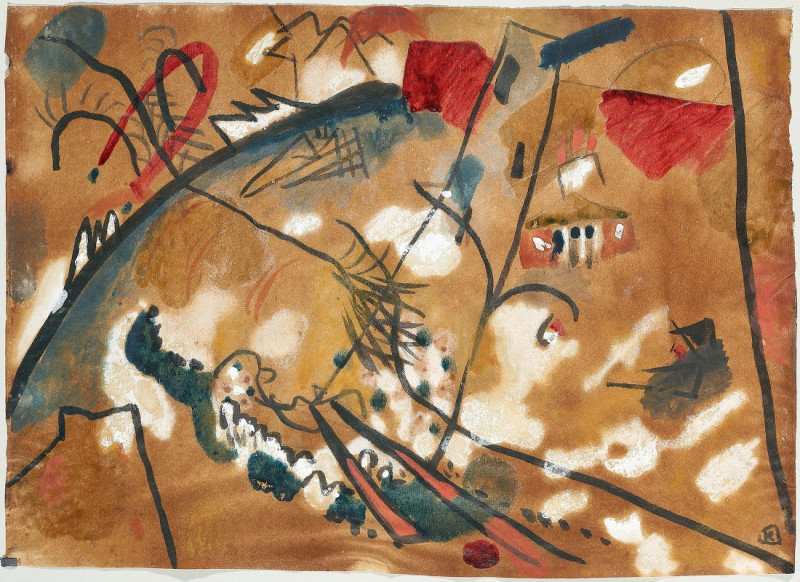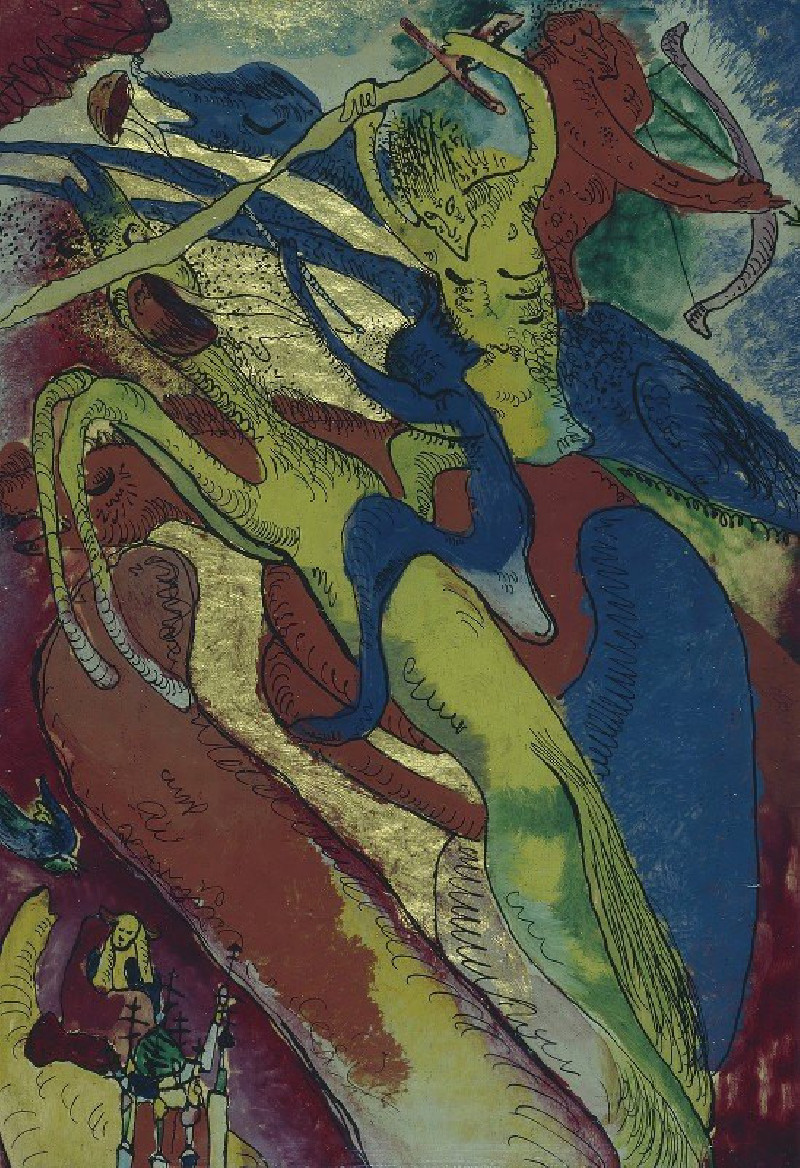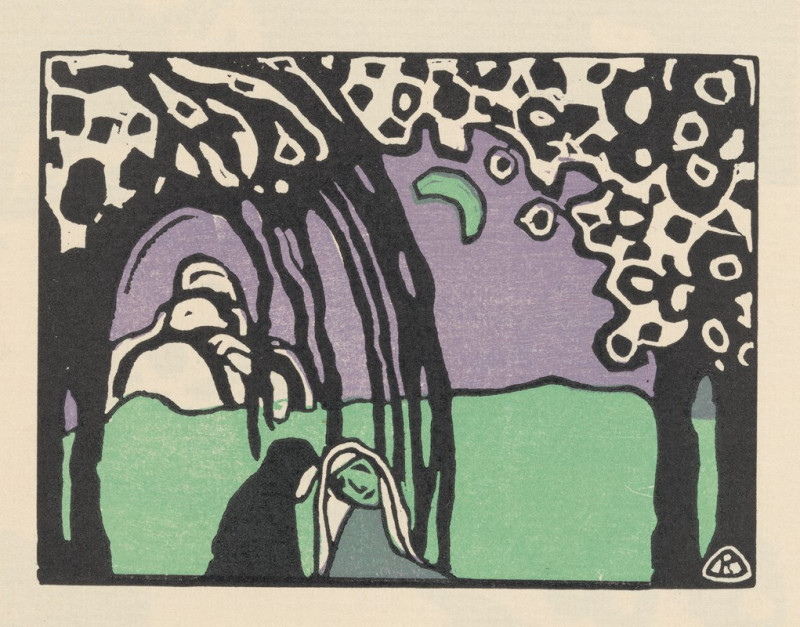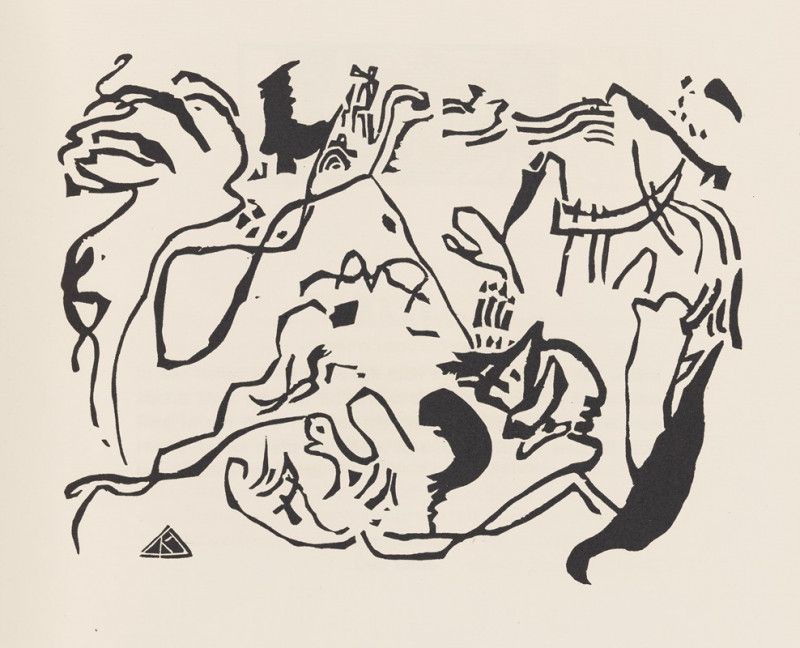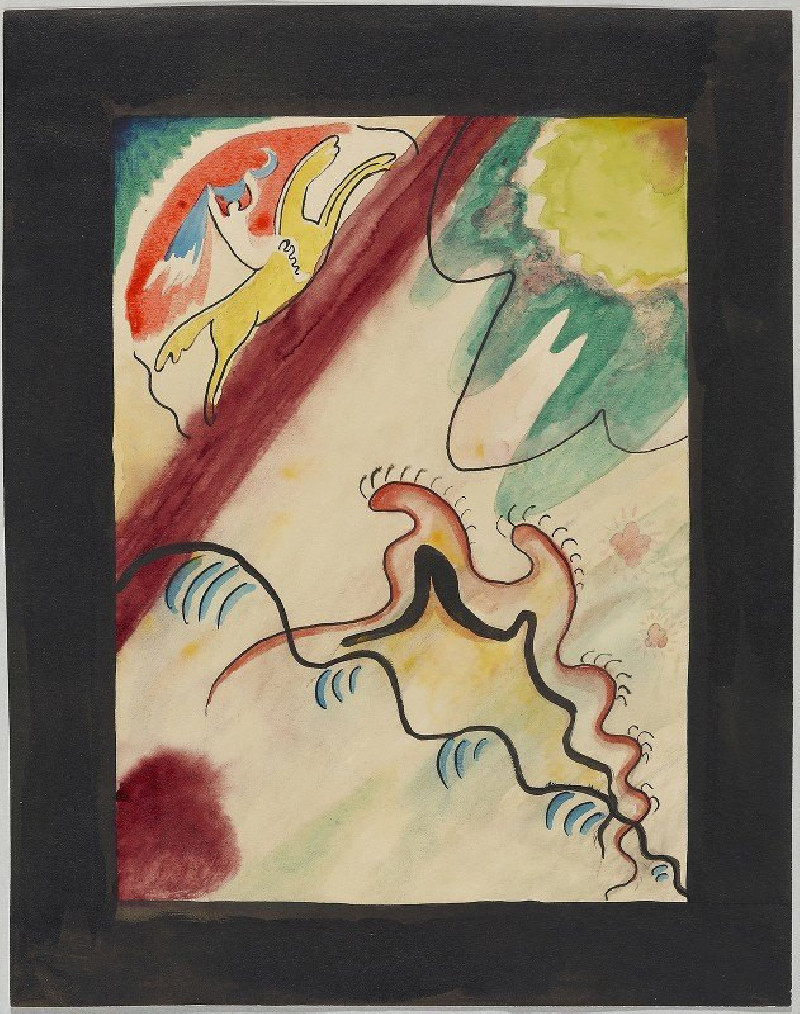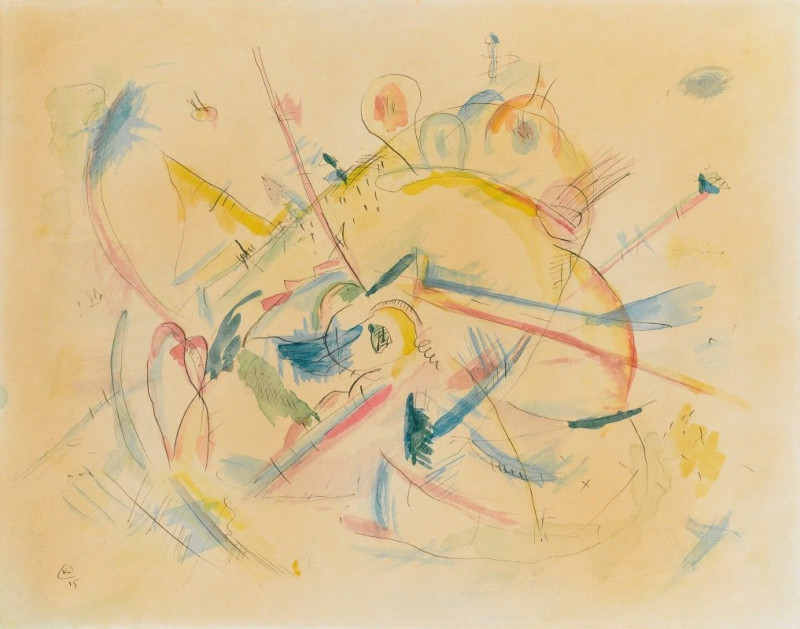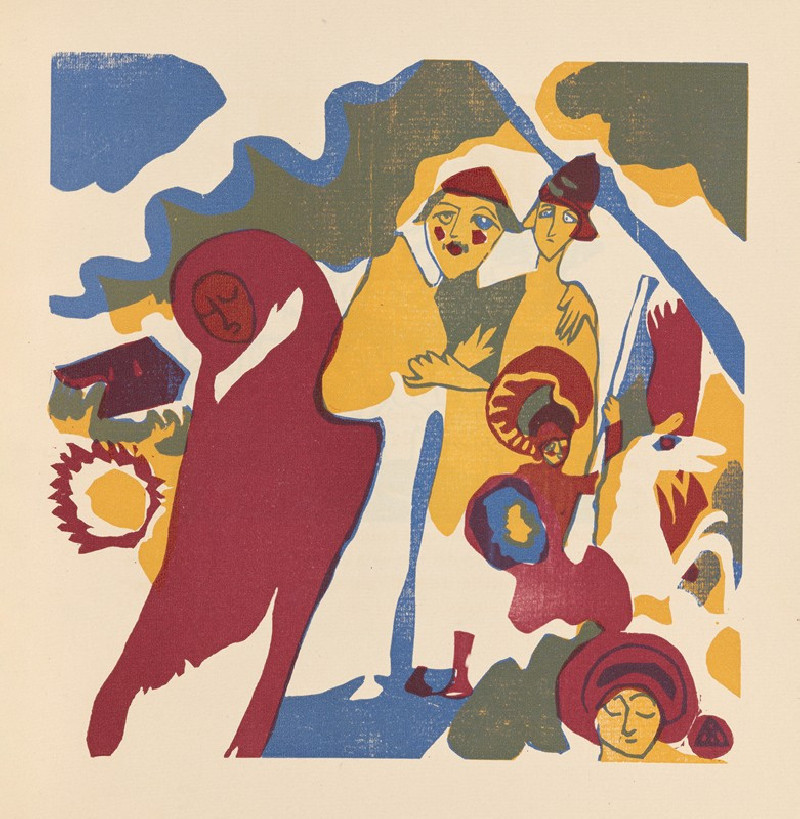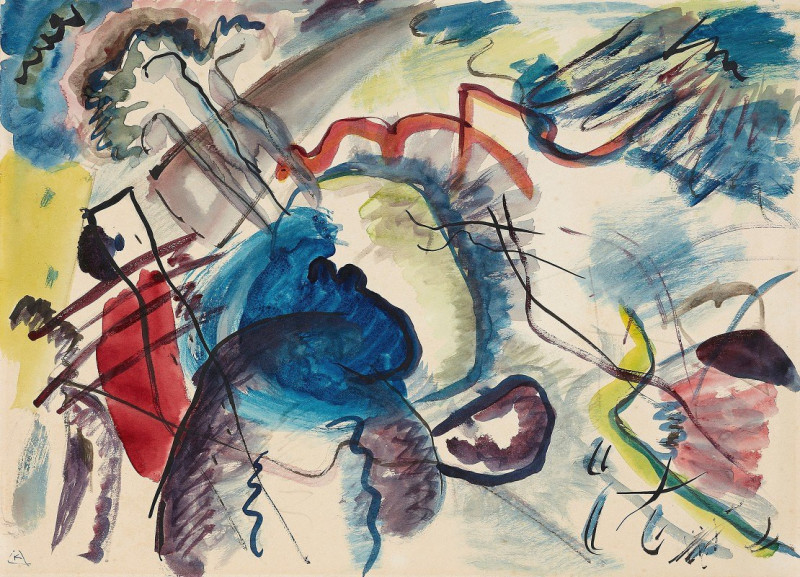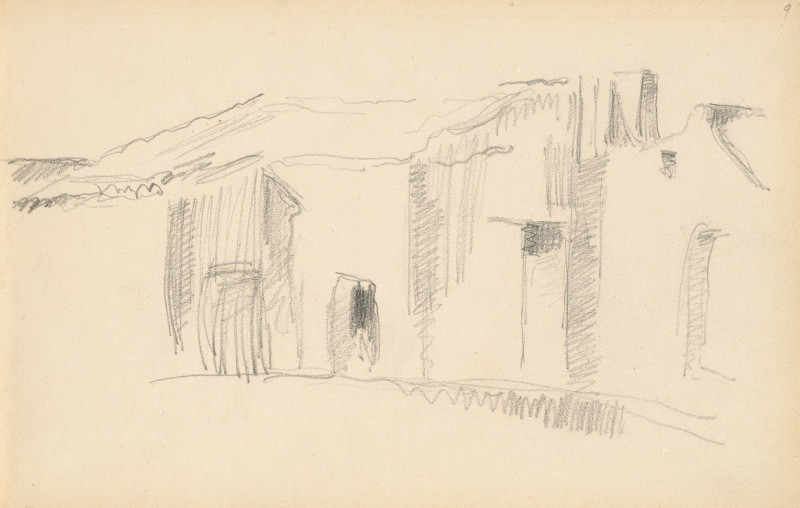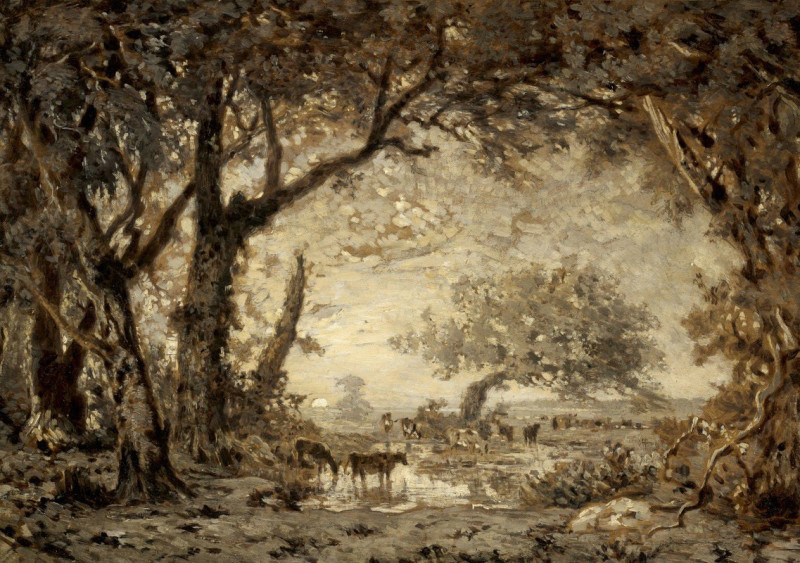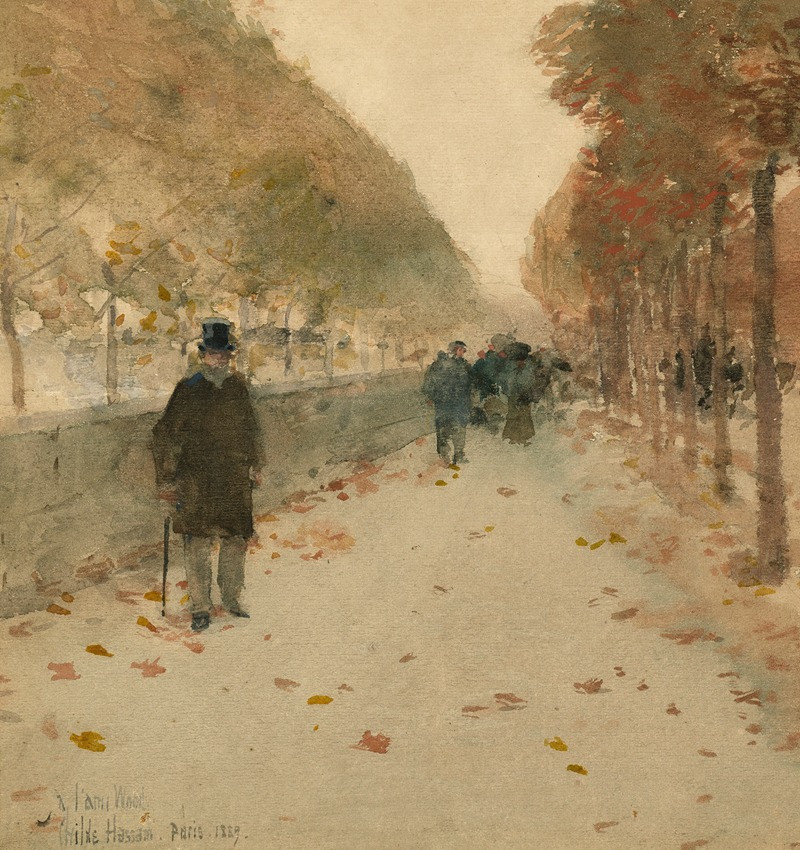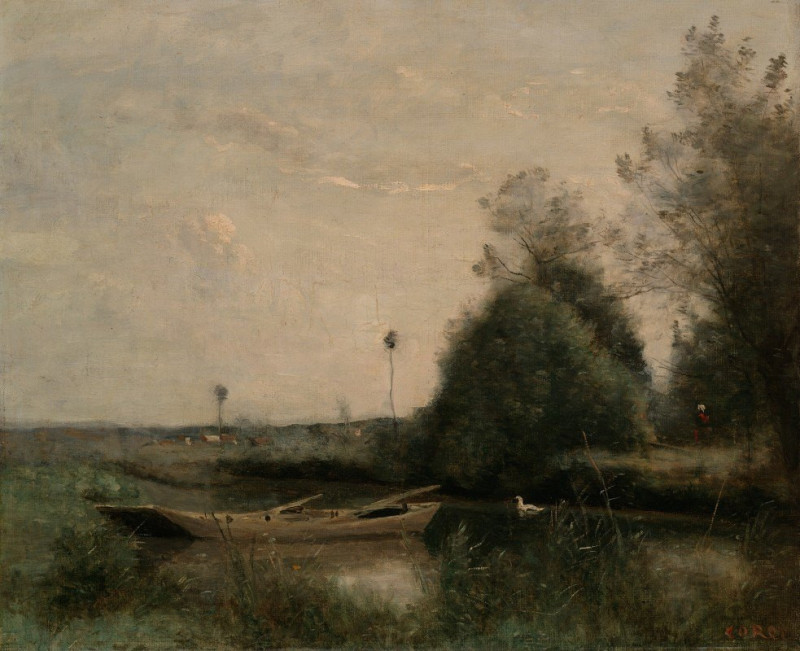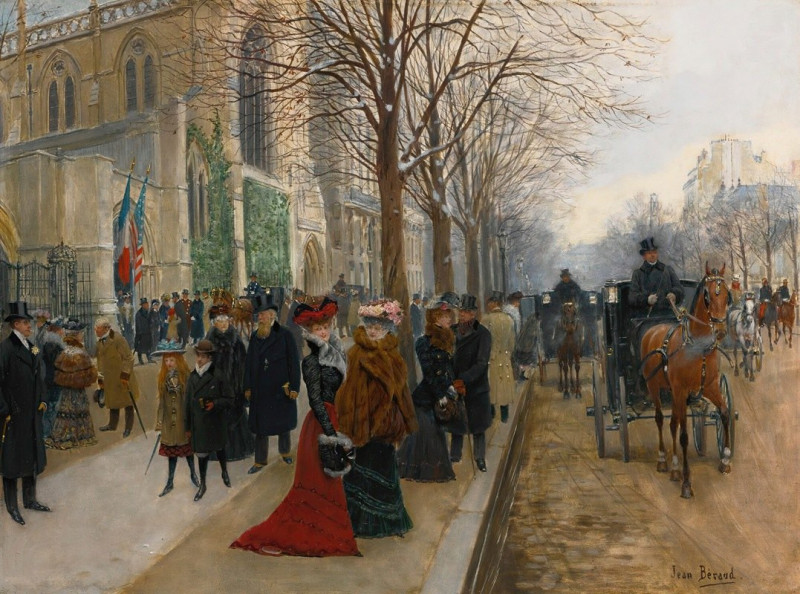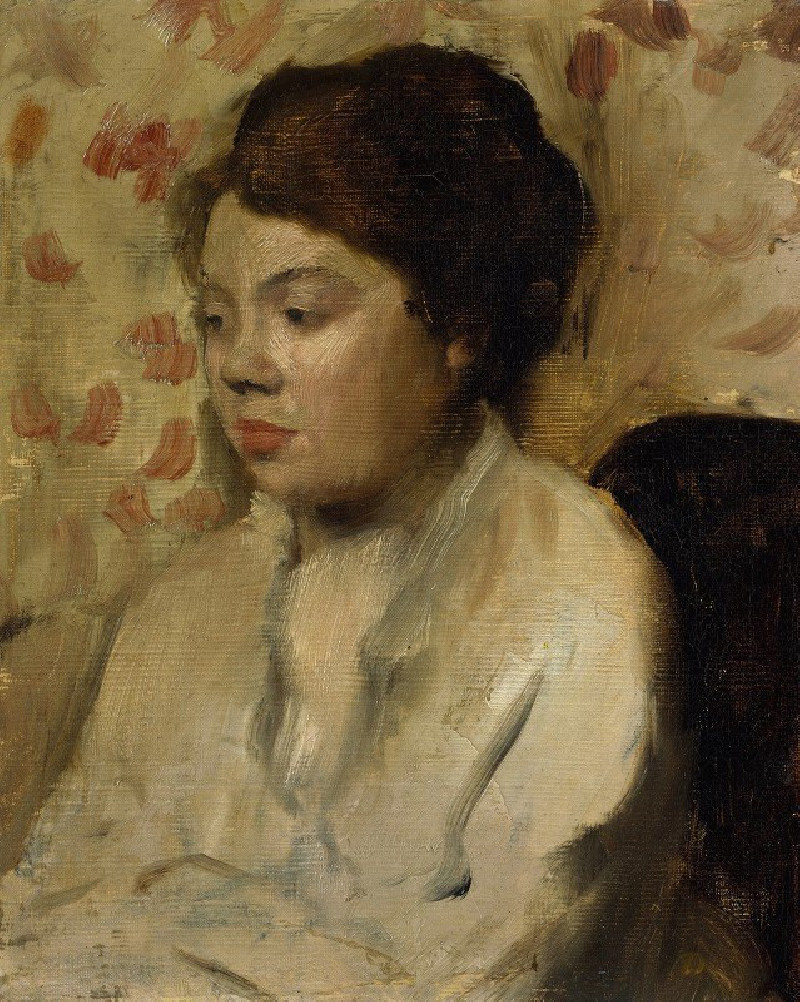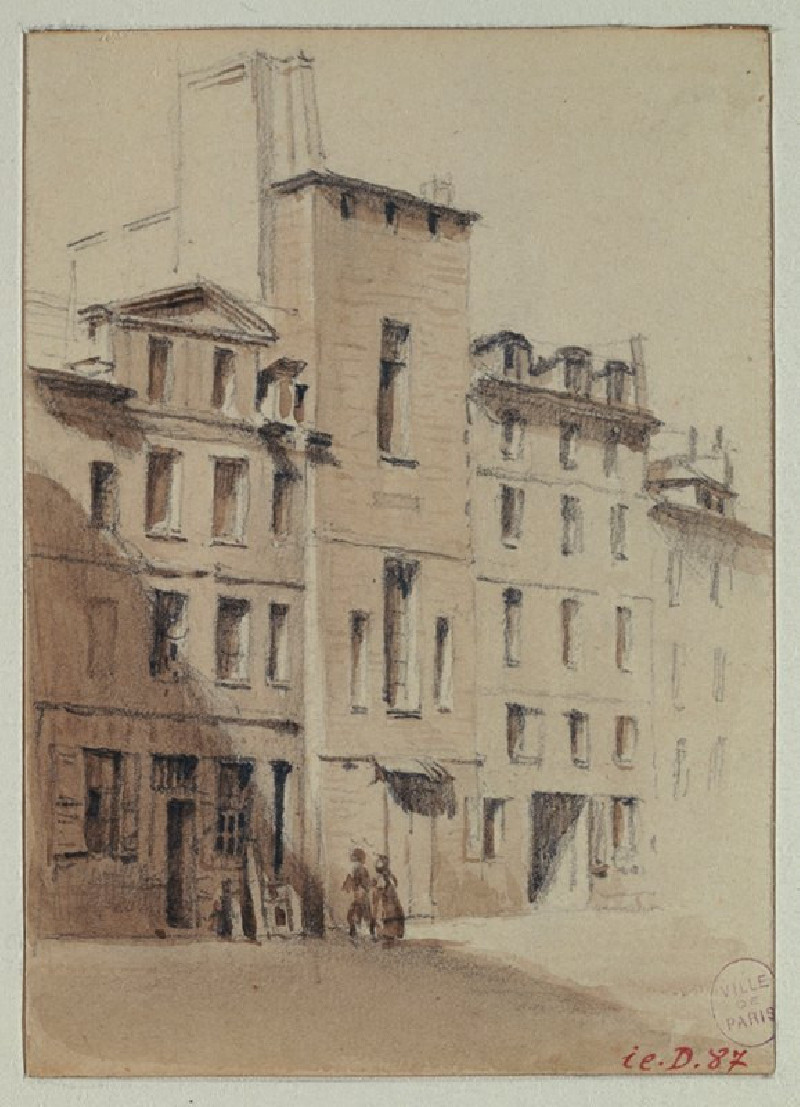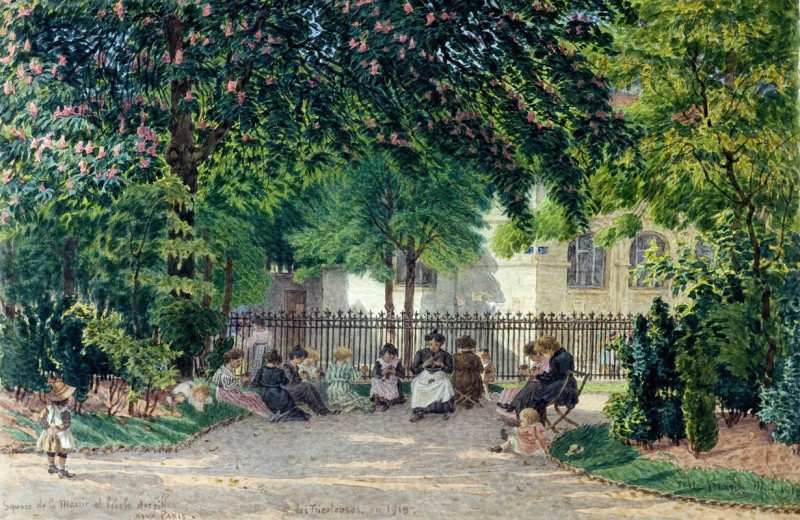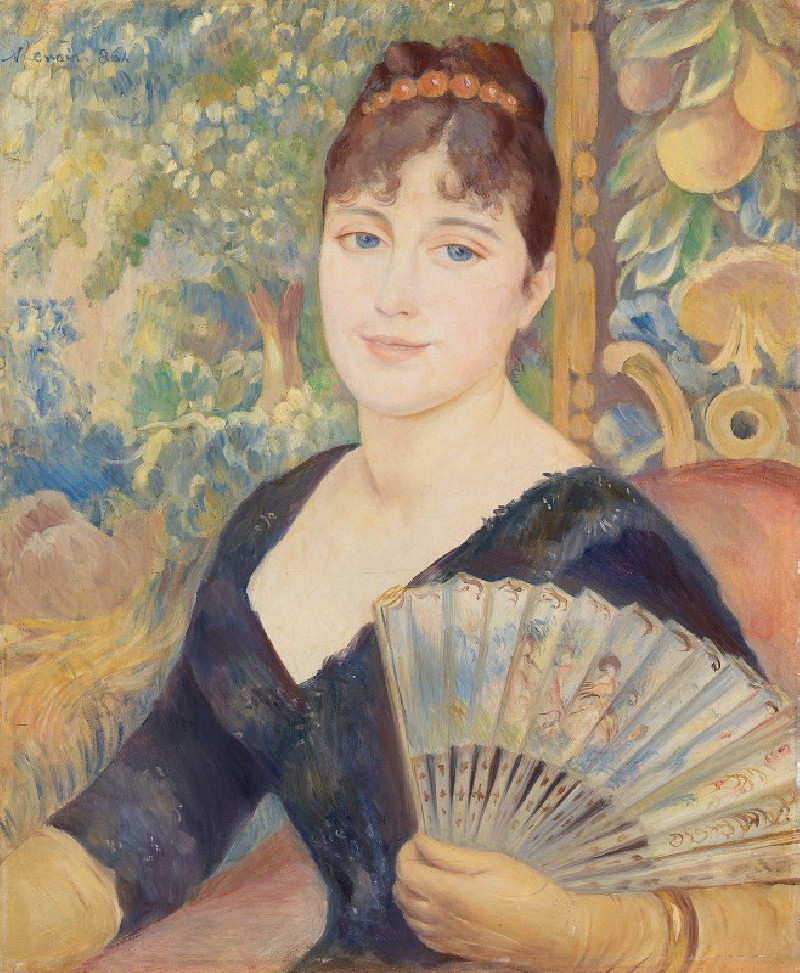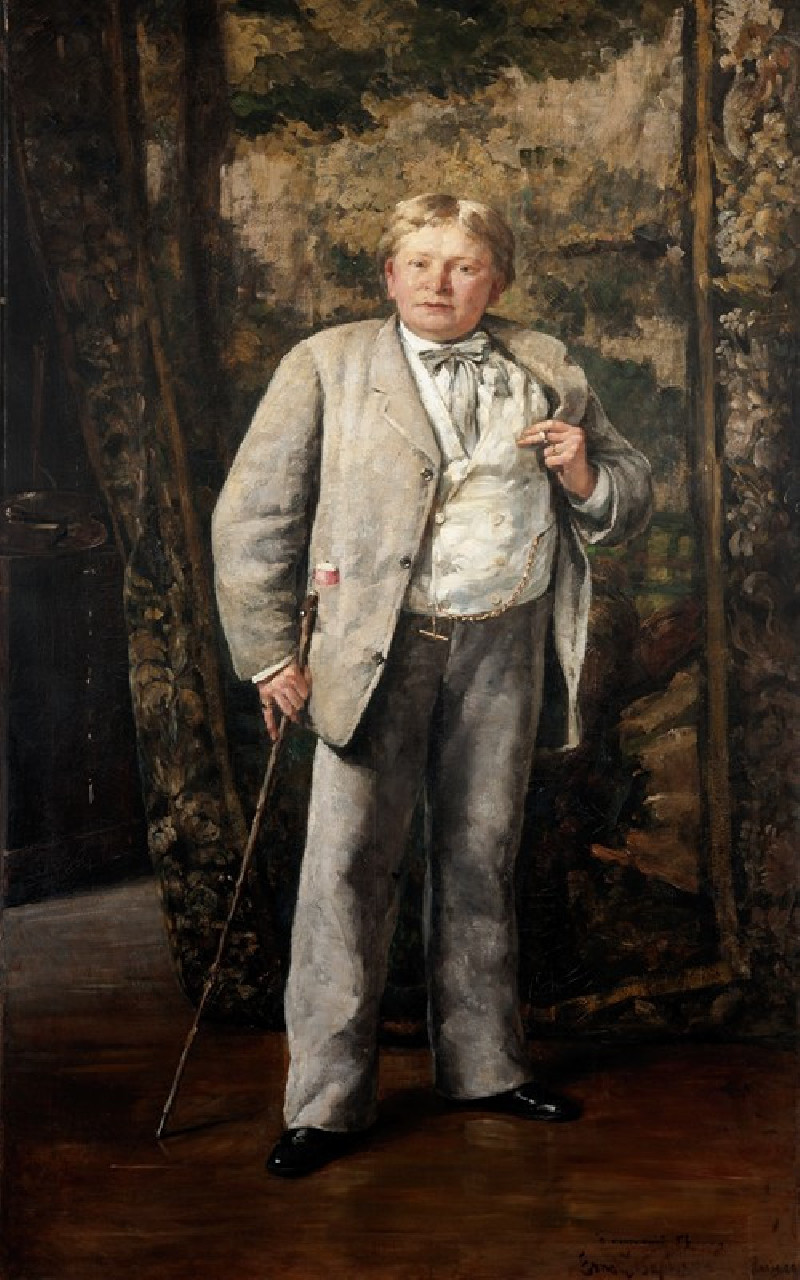Klänge Pl.17 (1913)
Technique: Giclée quality print
Recommended by our customers
More about this artwork
This piece by Wassily Kandinsky, from his book "Klänge," shows a distinct, expressionistic style characteristic of his abstract art. The image presents a bold contrast with its black and white palette, which is typical for the woodcuts in this series. In this particular painting, the scene is somewhat ambiguous, filled with shapes and forms that might suggest figures and landscapes, but they blur into an almost dreamlike ensemble.The composition features dynamic, curvilinear shapes that evoke motion, with some elements resembling human or mythical figures, giving it a sense of narrative or an event unfolding. Your eye might see suggestions of faces or bodies melding into the environment, or gestures that hint at communication or expression. The depiction invites the viewer to interact imaginatively, encouraging a personal interpretation of the abstract forms. Overall, Kandinsky's work in "Klänge" explores the integration of sound, color, and visual rhythm, engaging the viewer’s senses beyond just the visual.
Delivery
Returns
Wassily Wassilyevich Kandinsky was a Russian painter and art theorist. Kandinsky is generally credited as the pioneer of abstract art. Born in Moscow, Kandinsky spent his childhood in Odessa, where he graduated at Grekov Odessa Art school. He enrolled at the University of Moscow, studying law and economics. Successful in his profession—he was offered a professorship (chair of Roman Law) at the University of Dorpat today Tartu, Estonia)—Kandinsky began painting studies (life-drawing, sketching and anatomy) at the age of 30.

